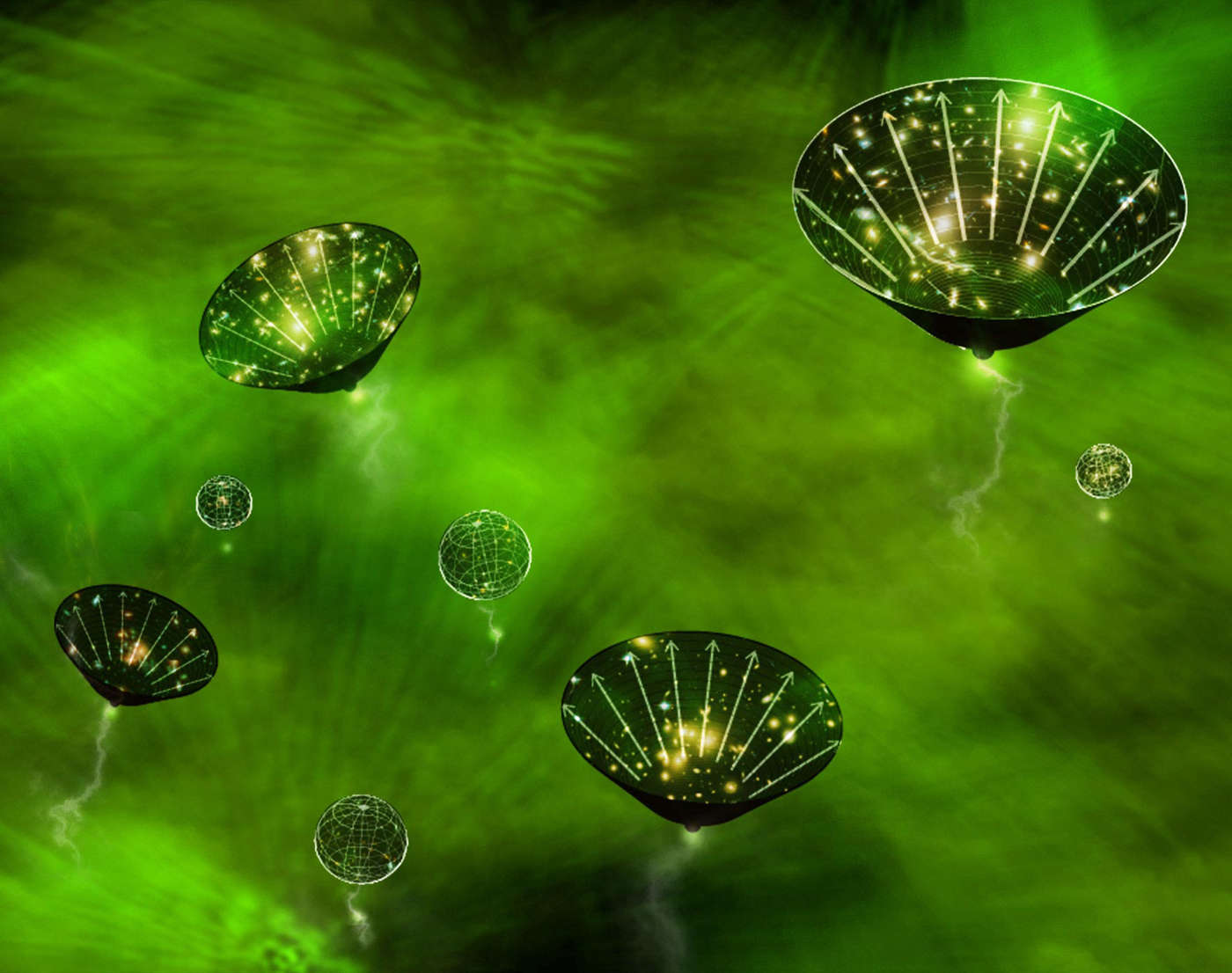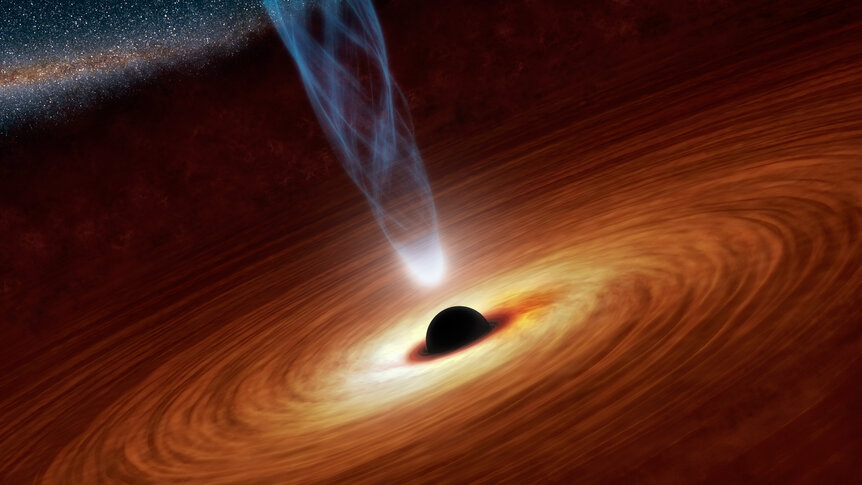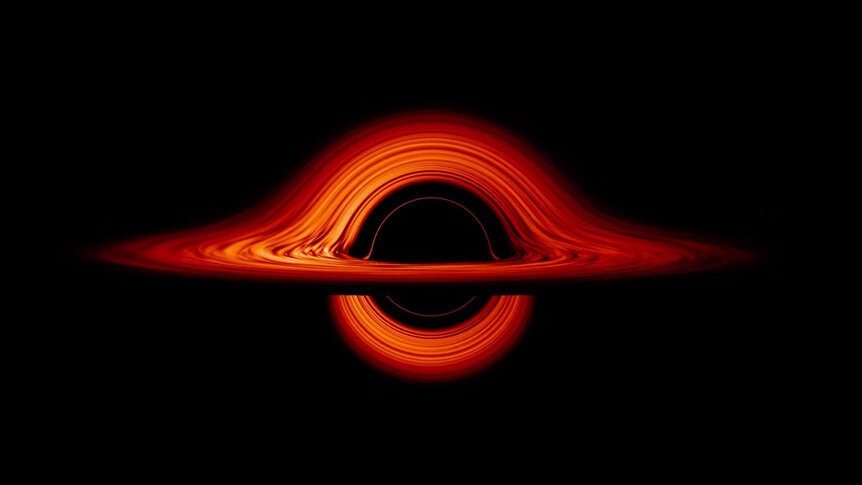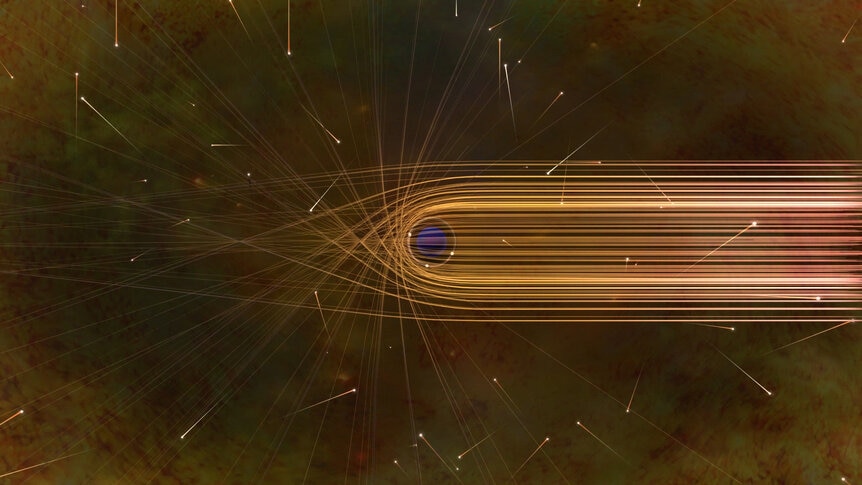Create a free profile to get unlimited access to exclusive videos, sweepstakes, and more!
Is dark matter made of teeny tiny black holes from another universe? Welllll…

Yeah, you're gonna want to sit down for this one. It's a little a lot:
It's possible that dark matter is made of tiny black holes created at the very beginning of time by nucleation from bubbles of false vacuum that created baby universes containing sub-lunar masses of matter during an infinitesimally brief period of cosmic hyperinflation.
If so, a team of scientists think, this could solve several nagging puzzles about the Universe, including dark matter, gravitational wave sources, and an odd observation made of the Andromeda Galaxy.
See? It's a lot. To be clear, I'm pretty skeptical, to say the least, but it's a fun idea based on a series of fun ideas, so let's tackle them one piece at a time.
The kind of matter we see in the Universe — made up of electrons, neutrons, protons, and other particles — is actually in the minority of stuff out there. The majority of matter out there is made of something we can't see; it literally emits no light, so we call it dark matter. We know it exists, for example, from the way galaxies rotate and move around in clusters. There's also quite a bit more evidence for its existence.
Over the decades, astronomers have eliminated just about everything we know of that could be dark matter. Rogue planets, dead stars, weird physics, and so on. Not much is left on the "maybe" list, but it includes exotic subatomic particles like axions, and wee black holes.
Yes, black holes. We tend to think of these beasts as having at least three times the mass of the Sun (which form when massive stars explode) up to supermassive ones in the centers of galaxies that outweigh our local star by a factor of billions. We know dark matter can't be these kinds of black holes because their gravity affects light that passes near them, bending its path. To account for the amount of dark matter we think is out there there'd need to be so many black holes we'd have noticed by now.
Normal black holes, that is (like any of them is "normal"). It turns out there's another kind, maybe. They're theoretical, and have far less mass. In fact, some could have as little mass as the Moon. A black hole that mass would be tiny, only about 0.2 millimeters a wide! That's roughly the thickness of a human hair.
None has ever been seen, but they're theorized to have been created at the very beginning of the Universe. There are several ways they could have formed, including just the immense pressures generated when the Universe was still a fraction of a second old and all the matter and energy in the entire cosmos was inside a volume smaller than a grain of sand. Because they would've formed then, they're called primordial black holes.
Another way is through what's called the false vacuum. This concept is fairly complex, but the idea is that any object with energy tends to lower its energy. That's why things cool when heated, or fall to the ground if let go. The Universe itself has energy, and we tend to think that the vacuum of space is in the lowest energy state it can be. But quantum mechanics postulates there's a lower energy state it can be in, the true vacuum state, and what we live in now is a false vacuum.
If a piece of the Universe were to collapse to the true vacuum state today, that bubble would grow and eventually consume the Universe. That's not exactly a happy bedtime story, but if you want to read more my friend and astrophysicist Katie Mack wrote an article about it for Cosmos Magazine.
However, if such a thing happened when the Universe was a fraction of a second old, the Universal expansion would outpace the growth of such a true vacuum bubble, and they couldn't keep up and destroy everything. There was a very brief period, called inflation, when the Universe expanded extremely rapidly, faster than the speed of light, and if these bubbles of true vacuum formed during that period (which lasted, by the way, for 10-32 seconds, so not long) they would branch off from our own Universe, and not destroy it.
From inside such a bubble you'd see an entirely new Universe born. Our own may have formed in this way. But from outside such a bubble what you'd see is a whole lot of mass compressed into a tiny volume: a black hole.
In the new study, the authors investigate what this would look like now given conditions in the early Universe. Black holes across a range of masses would've been created, mostly all very small.
But possible mini black holes have a lot of possibilities. For example, the authors find that if the masses of these primordial black holes goes from about that of a small asteroid up to about that of the Moon (very roughly 100 trillion to 1022 kilograms) then the total mass of these objects created would equal that of all the dark matter in the Universe.
Could we detect them? As I said, black holes bend light, and a black hole passing between us and a more distant star would affect the starlight, amplifying it in a measurable way. We call this gravitational lensing. Many lensing events have been seen, usually by distant stars passing in front of another star, or the light from an entire galaxy warped as it passes through a massive galaxy cluster. However, nothing from a primordial black hole has been seen.
... maybe. There was a weird microlensing event seen in a dedicated survey of the nearby Andromeda Galaxy, looking for any stars that appear to brighten in a way consistent with lensing. They found only one candidate, and it was consistent with a primordial black hole. In that study, the astronomers making the observation use this event to rule out a broad range of possible primordial black holes that could make up dark matter. However, the authors of the new study say their results are still consistent with this, allowing dark matter to be made up, at least in part, of these small black holes.
They also show that it's possible that some of the bigger primordial black holes could have provided "seed masses" — starter kits, if you will — for the supermassive black holes we see in galaxies today, with the much larger ones growing from the tiny ones. They even posit that stellar-mass black holes, ones with a few to a few dozen times the mass of the Sun, can be made this way, and not necessarily from supernovae events of massive stars. They think these could be the black holes we see colliding and creating gravitational waves in events seen by LIGO.
OK, so there you have it. It's a lot, sure, but there's a bigger question: Is this correct?
Wellllll, maybe. It's all theoretical, and there are a lot of steps to go from what we know now to having actual wee black holes permeating the Universe and creating mysteries all over the place. For me personally, it's a lot to swallow. I'm always wary of one kind of thing solving vast numbers of problems; we usually find that a new type of object or event explains a few puzzles we see, not all of them. Something that acts like a skeleton key deserves a lot more skepticism.
So I'll leave it to the experts to support or refute this idea. But either way, it's interesting, and one thing I do like about it is how clever it is. I enjoy seeing people play with ideas, and in science, especially highly theoretical science, it's a good idea to publish these ideas so that other scientists can poke at them. "Clever" doesn't mean "correct," but it may help constrain other ideas, or inspire observations to test the hypotheses.
Most ideas turn out to be wrong, but the process of coming up with them and testing them helps advance science and understanding either way.
Plus? It's fun to think about. That's a huge reason we do science as well.


















